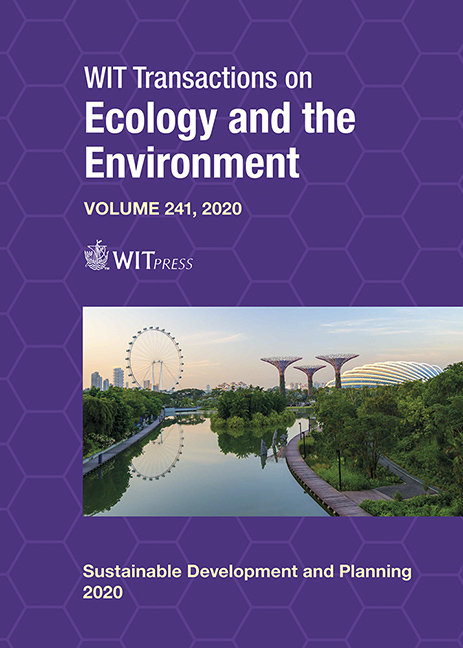TRIANGULAR PYRAMID TRUNK: THE THREE AXES OF THE SMART CITY ASSESSMENT TOOL
Price
Free (open access)
Transaction
Volume
241
Pages
12
Page Range
79 - 90
Published
2020
Paper DOI
10.2495/SDP200071
Copyright
WIT Press
Author(s)
DIOGO CORREIA, LEONOR TEIXEIRA, JOÃO MARQUES
Abstract
Smart Cities have changed from a purely technological paradigm to a holistic, integrated strategy, where the citizens play an important role in the decision-making process. Cities begin to understand the potential of integration approaches, interoperability of solutions, and start seeking strategic thinking when addressing new technologies. In this context, to implement a holistic strategy, city decision makers must have a tool that helps them to strategize according to their current state and then understand whether the actions they adopted are having the desired outcomes concerning their previously established objectives. It is not possible to create strategic visions for Smart Cities without a tool to regularly assess and monitor them. In this matter, several studies report some attempts to formulate a methodology to calculate indexes to evaluate cities’ maturity level. However, they have either not taken properly into consideration indicators’ weighting or the focus of the index was not clear and mixed up the key performance indicators (KPIs) of different concepts in an attempt to provide a more generic tool. Despite this, the previous studies are used as the basis to support the methodological approach of this research. This article tackles this gap in the literature by providing the most up to date Smart City assessment tool to evaluate cities. While the Smart City concept has different understandings among researchers and academia practitioners, the evolution of the concept has tended to incorporate the axes of sustainability, innovation, and quality of life. Therefore, these are featured in the present index calculation supported by the ICTs and participatory approaches. Existing standard KPIs and frameworks do not include them, focusing most of the time in one of these axes while leaving the others aside. Thus, this paper proposes to describe the development of a methodology that encompasses every one of these three axes to give cities a tool they can use to monitor their actions.
Keywords
Smart City, framework, index, participatory development, indicator, assessment, innovation, sustainability, inclusiveness, quality of life





